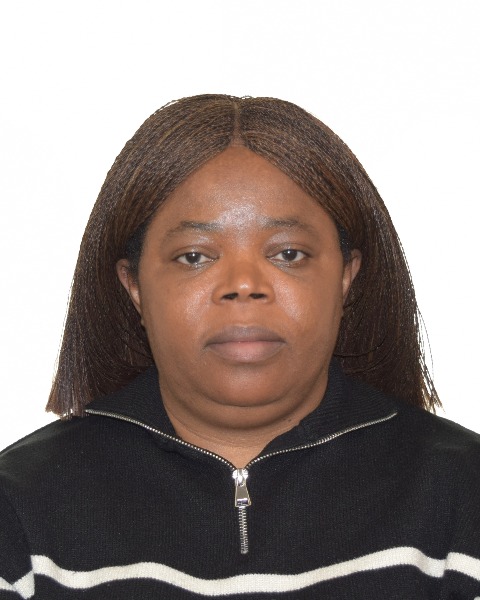Nephrology 3
Session: Nephrology 3
594 - Practice Variation in the Use of Steroid-sparing therapies in Childhood Steroid Sensitive Nephrotic Syndrome: Results from a Prospective Cohort Study.
Sunday, April 27, 2025
8:30am - 10:45am HST
Publication Number: 594.6269
Augustina Okpere, University of Clagary, Calgary, AB, Canada; Angie L. Aguilar-González, Hospital Materno Infantil Juan Pablo II / Universidad Rafael Landivar, Guatemala, Chimaltenango, Guatemala; Catherine Morgan, Stollery Children’s Hospital, Edmonton, AB, Canada; Allison Dart, Max Rady College of Medicine, Rady Faculty of Health Sciences, University of Manitoba, Winnipeg, MB, Canada; Cherry Mammen, University of British Columbia Faculty of Medicine, Vancouver, BC, Canada; Rulan Parekh, Women's College Hospital, Toronto, ON, Canada; Pavel Geier, CHEO, Ottawa, ON, Canada; Genevieve Benoit, CHU Sainte-Justine, Université de Montréal, Montréal, PQ, Canada; Janusz Feber, University of Ottawa Faculty of Medicine, Ottawa, ON, Canada; James B. Tee, Dalhousie University Faculty of Medicine, Halifax, NS, Canada; Steven Arora, McMaster University Michael G. DeGroote School of Medicine, Hamilton, ON, Canada; Damien Noone, University of Alberta Faculty of Medicine and Dentistry, Edmonton, AB, Canada; Silviu Grisaru, University of Calgary, Calgary, AB, Canada; Rahul Chanchlani, McMaster Children's Hospital, Hamilton, ON, Canada; Susan M. Samuel, University of British Columbia Faculty of Medicine, Vancouver, BC, Canada

Augustina Okpere, MBBS, MSc, FWACP (she/her/hers)
Clinical Research Associate
University of Clagary
Calgary, Alberta, Canada
Presenting Author(s)
Background: Glucocorticoids are the standard of care for the initial treatment of childhood idiopathic nephrotic syndrome (NS) beyond 1 year of age. Steroid-sparing therapies are often used to prolong disease remission while minimizing steroid toxicity in steroid dependent NS (SDNS) and frequently relapsing NS (FRNS). However, there is insufficient evidence to direct the optimal selection of these agents.
Objective: This study aims to describe practice variation in the use of steroid-sparing agents for childhood steroid sensitive NS in Canada.
Design/Methods: Children aged 1- 18 years with NS from 11 Pediatric nephrology centres in Canada were enrolled into the Canadian Childhood Nephrotic Syndrome (CHILDNEPH) prospective cohort from 2013 - 2019. Data on children with steroid sensitive NS treated at any time with cyclophosphamide (CYP), tacrolimus (TAC), mycophenolate (MMF), cyclosporine (CSA) and rituximab (RTX) in each centre including time to first relapse were analyzed using summary statistics. SDNS and FRNS were defined as per the International Pediatric Nephrology Association guideline. Patients who were treated with steroid-sparing therapies prior to enrolment were excluded from the study.
Results: Of the 371 children in the cohort, 321 (86.5%) had steroid sensitive NS and 133 met the inclusion criteria. The median age at enrolment was 3 years (IQR: 2-6.3 years). The median follow-up period was 3 years (IQR 1- 4 years). The timing of initiation of steroid-sparing therapy varied across centres; the majority (72.2%) of centres initiated steroid-sparing therapies after a median of 3 relapses (IQR: 2 - 4 relapses) after enrolment. Of the 133 participants, 58.7% had steroid dependent NS. There was wide variability in the choice of initial steroid-sparing agent. CYP and TAC were the most frequently used initial steroid-sparing agents at 39.1% and 23.3% respectively. Thirty (22.6%) patients switched to a second steroid-sparing medication after a median time of 4 months (IQR 0.25 -11 months); of which, 40% switched from either CYP or MMF to TAC. Twenty-four (80.0%) participants received 2 different agents, while 6 (20.0%) received 3 different agents (Figure 1). There were no statistically significant differences in time to first relapse (log rank test P-value 0.36) among those treated with the initial steroid-sparing medications (Figure 2)
Conclusion(s): Significant variation in the use of steroid-sparing therapies exists in the treatment of steroid sensitive NS. A clinical trial is needed to examine the efficacy of these medications to optimize treatment and decrease variation in practices.
Figure 2: Kaplan-Meier survival curves for time to relapse among participants with steroid sensitive nephrotic syndrome treated with cyclophosphamide, tacrolimus, mycophenolate, cyclosporine and rituximab.
.png) Kaplan-Meier survival curves for time to relapse among participants with steroid sensitive nephrotic syndrome treated with cyclophosphamide, tacrolimus, mycophenolate, cyclosporine and rituximab.
Kaplan-Meier survival curves for time to relapse among participants with steroid sensitive nephrotic syndrome treated with cyclophosphamide, tacrolimus, mycophenolate, cyclosporine and rituximab.Figure 1: Pattern of switches between steroid sparing therapies among children with steroid sensitive nephrotic syndrome
Figure 1.pdfPattern of switches between steroid sparing therapies among children with steroid sensitive nephrotic syndrome

